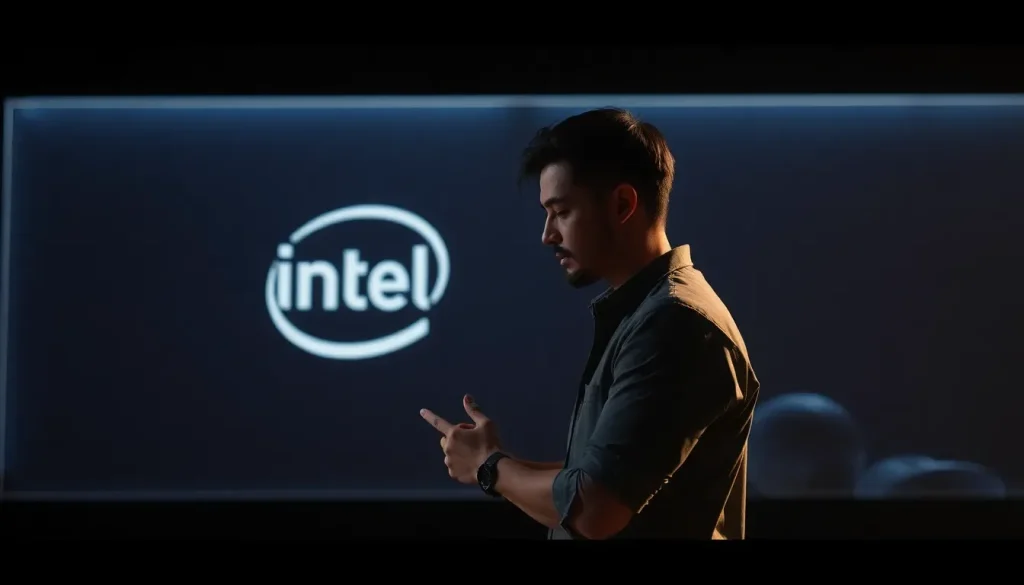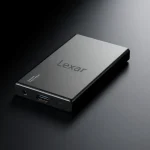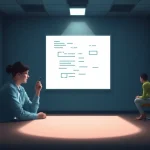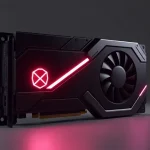NVIDIA y Intel: una rivalidad de 33 años transformada en amor

In a rapidly evolving tech landscape, the dynamics between industry giants can shift dramatically. NVIDIA, once a staunch competitor of Intel, now finds itself in an unexpected alliance with the very company it has battled for over three decades. This twist in their relationship opens up a plethora of possibilities, but what does it really mean for the industry? Let's delve deeper into this fascinating development.
NVIDIA's surprising embrace of Intel after years of rivalry
In a recent interview with analyst Jim Cramer, NVIDIA's CEO, Jensen Huang, expressed a candid view of his relationship with Intel, highlighting the transformative nature of their partnership. His comments come in the wake of NVIDIA's significant investment in Intel, which marks a pivotal moment in the tech industry's narrative. Huang's remarks reflect a sense of irony and humor, emphasizing the drastic changes that have occurred in their relationship over the years.
The backdrop to this alliance is Intel's ongoing struggles. The company has faced numerous challenges, including mismanagement that led to the ousting of three CEOs in just a decade. This turmoil has paved the way for NVIDIA, traditionally seen as a rival, to step in as a potential savior. Huang's investment is not merely financial; it symbolizes a strategic alignment aimed at mutual growth and innovation.
The evolution of competition into collaboration
NVIDIA's shift from competitor to collaborator is unprecedented. Huang humorously remarked that Intel "dedicated 33 years of our lives to trying to kill us." This statement underscores the intensity of their historical rivalry, which has now transitioned into a partnership characterized by cooperation. The new dynamic is aptly described by Huang as a "relationship between lovers, not fighters," highlighting a desire to explore synergies rather than engage in destructive competition.
As part of this collaboration, Intel will manufacture a custom microprocessor for NVIDIA, while NVIDIA will reciprocate by developing new products tailored for a shared market. This move indicates a strategic pivot for both companies, aiming to capitalize on their respective strengths to create innovative solutions. Huang emphasizes this as a win-win scenario, suggesting that both can thrive without the need for one to dominate the other.
Potential impact of the NVIDIA-Intel alliance
The implications of this alliance extend beyond their immediate collaboration. By focusing on customized chips and accelerating new computing categories, NVIDIA and Intel are signaling a shift towards hybrid architectures tailored for artificial intelligence. This strategic direction could reshape the market landscape, blending the strengths of both companies in a way that was previously thought impossible.
Huang's comments about NVIDIA's influence in the market are telling. He jokingly noted, "When we give a conference, everyone’s stocks go up. When someone else does, ours go down," highlighting NVIDIA's dominant position. This dominance, however, is now being shared as both companies seek to redefine their roles in an increasingly competitive market.
Despite this newfound collaboration, Huang remains cautious about external factors, particularly the geopolitical tension with China. He acknowledged that while his revenue forecasts consider a "China zero" scenario, a complete ban would ultimately harm American firms in the long run. This pragmatism reflects an understanding of the complex interplay between technology and global politics, which will likely influence future strategies.
Challenges and opportunities in the tech landscape
The partnership between NVIDIA and Intel is set against a backdrop of intense competition from other major players like AMD and Arm. AMD's Ryzen and Radeon lines are direct challengers to NVIDIA's RTX and Intel's Core processors, creating a highly dynamic environment. Similarly, Arm's presence, especially through companies like Qualcomm and Apple, complicates the competitive landscape further.
The juxtaposition of these competing technologies raises questions about the future trajectory of the market. For instance, both AMD and Arm are vying for dominance in sectors where NVIDIA and Intel have traditionally excelled, such as gaming and high-performance computing. The result is a complex mosaic of competition and cooperation that could redefine industry standards.
- AMD: Competes with Ryzen and Radeon against NVIDIA's RTX and Intel's Core processors.
- Arm: Engages in competition with Qualcomm and Apple, aiming for market share in Windows and gaming.
- NVIDIA and Intel: Shift from adversaries to collaborators in a strategic alliance.
The road ahead: What can we expect?
As NVIDIA and Intel embark on this new chapter, the tech community is left to ponder the potential outcomes. Will their combined efforts result in groundbreaking innovations, or will they fall short of expectations? The integration of their technologies—Core + RTX and Xeon + GB—could lead to a new standard in computing performance, tailored specifically for the growing demands of artificial intelligence and beyond.
This collaboration isn’t just a simple partnership; it has the potential to reshape the entire landscape of technology as we know it. With both companies pooling their resources and expertise, the possibilities for innovation are immense. The tech world will be watching closely as they navigate this complex terrain.
For those interested in exploring this development further, you can watch a comprehensive analysis of the situation in this YouTube video that delves into the implications of NVIDIA's investment in Intel.
In conclusion, the future of NVIDIA and Intel's collaboration remains uncertain, but one thing is clear: the tech industry is in for a thrilling ride. As they navigate their newfound partnership, the stakes are higher than ever, and the outcome will undoubtedly reverberate across the entire tech ecosystem.




Leave a Reply